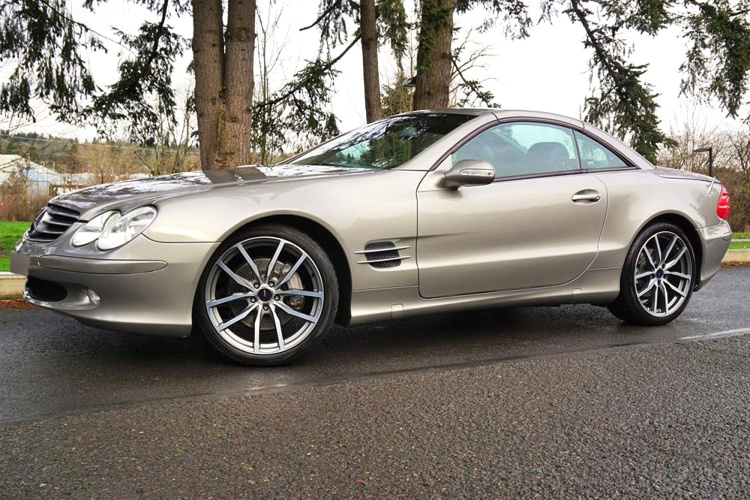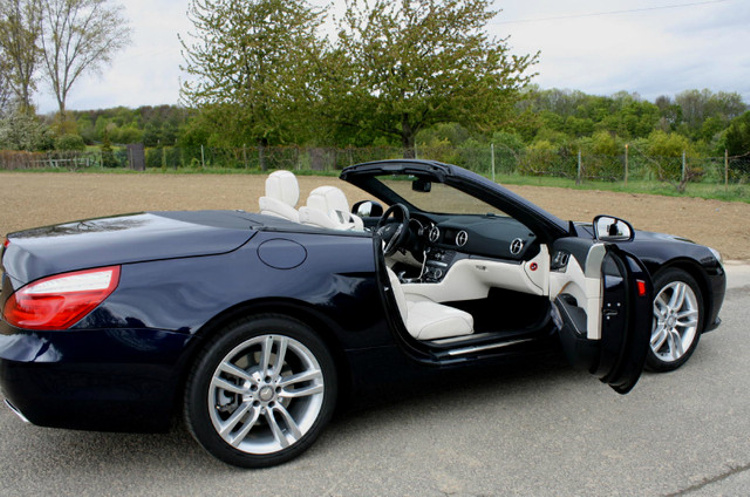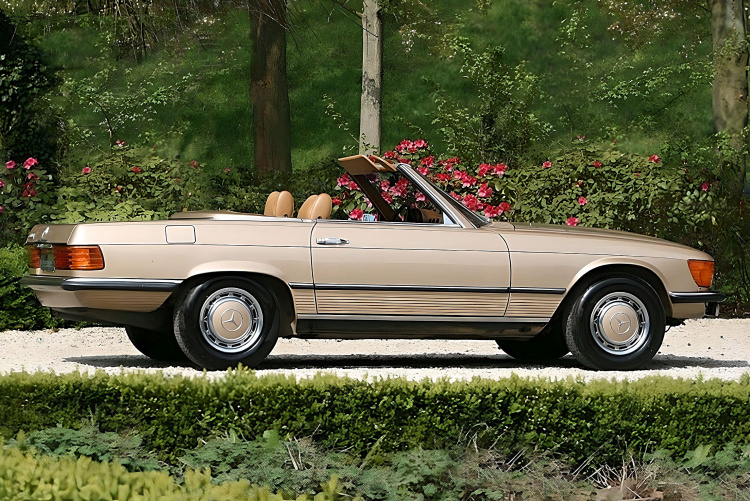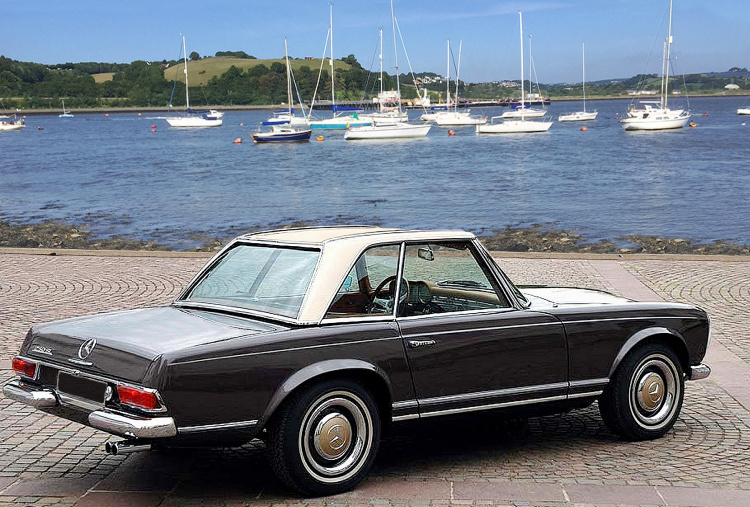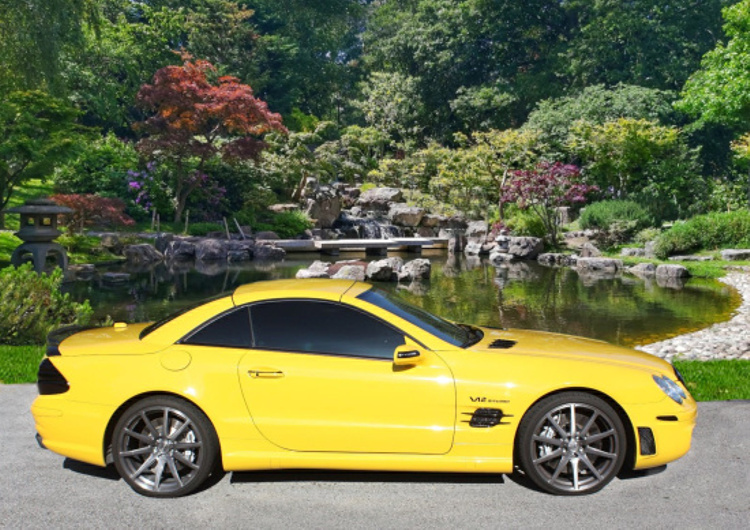Mercedes R129 SL, one of the best Sacco-Designs
Mercedes R129 SL: Even after the best-selling R107, the Mercedes R129 was a great success in the luxury segment of the Stuttgart-based volume manufacturer. Despite six-figure prices, the two-seater became a bestseller and was built for twelve years.
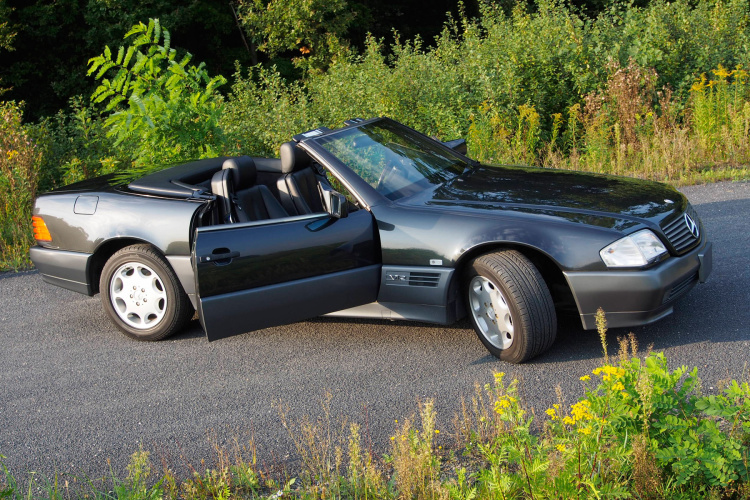
Its versatility and suitability for everyday use are still impressive today. Whether sporty cornering, relaxed cruising on country roads or comfortable journeys to distant destinations: The magnificent Mercedes Cabriolet is a true Gran Turismo and has everything it takes to become a friend for life. Its passive safety set standards, and its aesthetic design remains timelessly beautiful.
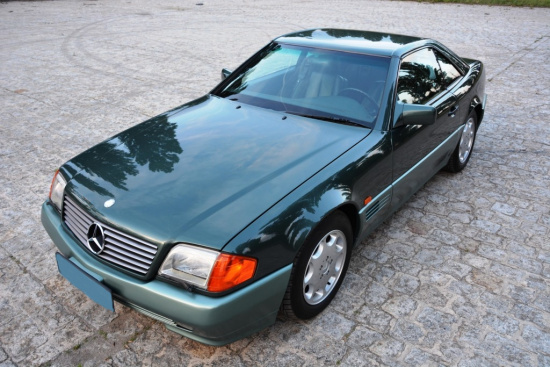
The Mercedes R129 was the first SL with an electrically foldable top
In the spring of 1989, Daimler-Benz presented the Mercedes R129 at the Geneva Motor Show. It was to replace the R107, which was showing its age after 18 years of production. It was not only the abundant chrome trim that exposed the classic as a child of the early 1970s. Although it is true that the R107 was constantly modernized technically, for example with a new six-cylinder engine and V-8 engines made of light alloy, ABS and modern catalytic converter technology.
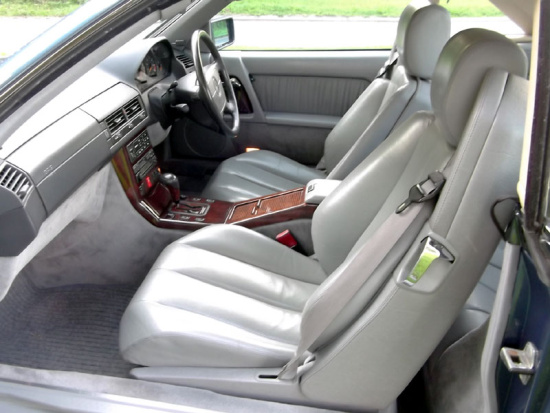
The R129 was the first SL with integrated seats
Nevertheless, its slightly antiquated character could not be denied. With the R129, Daimler-Benz skipped an entire generation of vehicles, hence the visual and technical difference from its predecessor was significant.
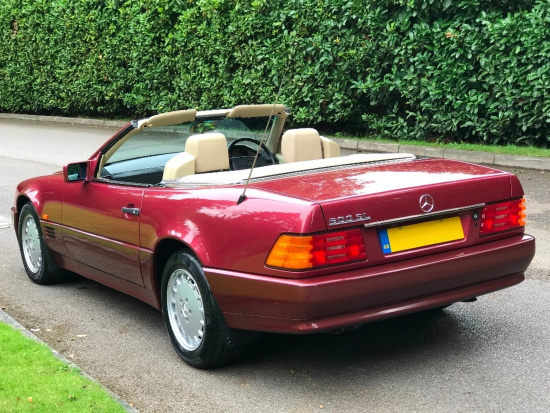
The car was an immediate sales success
Modern four-valve engines, plus:
- the space-steering axle
- the adaptive damping system
- the automatic roll bar
- the integral seats and
- the electro-hydraulic top
were just a few of the impressive innovations. Although the Mercedes plant in Bremen doubled production in a short time, it was unable to meet demand. The delivery time for the Mercedes R129 SL was initially up to over five years, especially in Europe!
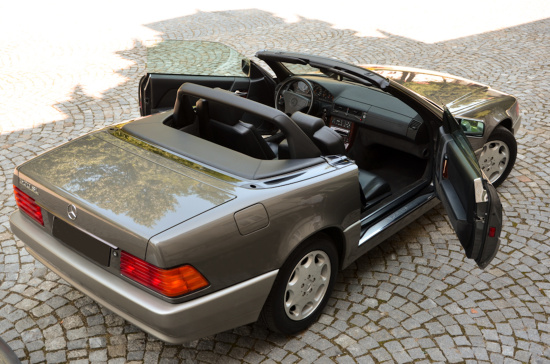
The R129 was significantly improved over its predecessor, the R107, especially in terms of torsional rigidity and rust protection. As always, the new roadster was available with a soft top (which operated for the first time electrically) and a hardtop. Starting in 1995, an aluminum coupe roof with glass insert and sun shade was available as an option. In addition, the front and rear skirts as well as the plastic side skirts – also known as Sacco boards – were slightly rounder and painted in the body color instead of the previous main color.
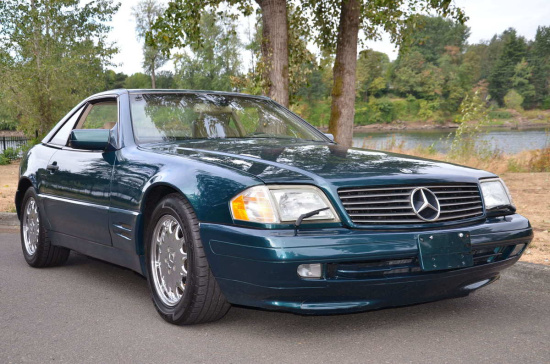
The Mercedes R129 saw its first update (MOPF) in 1995
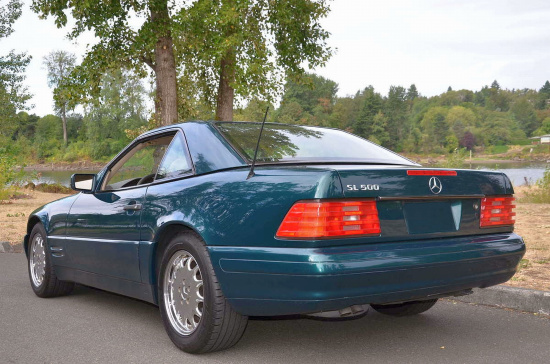
A second Facelift for the Mercedes R129 followed in 1998
A new front grille and differently designed aluminum wheels completed the new look. The design of the headlights and taillights also changed, and Xenon lights were available as an option. Inside, the door panels changed, the Mercedes got a new steering wheel and automatic air conditioning was now standard. A second facelift followed three years later, with changes to the front, rear and side skirts, exterior mirrors, rims and steering wheel. The design was clearly adapted to that of its little brother, the Mercedes SLK (R 170). Heated seats and leather upholstery were standard from 1998.
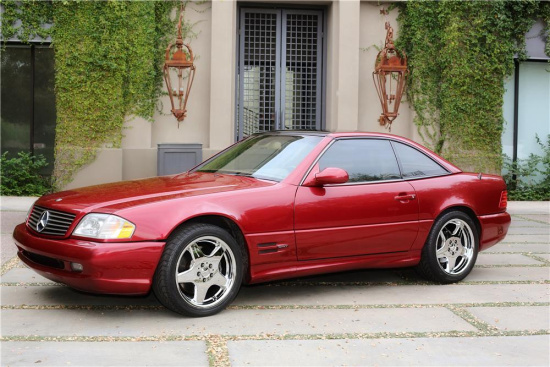
The second update occured in 1998
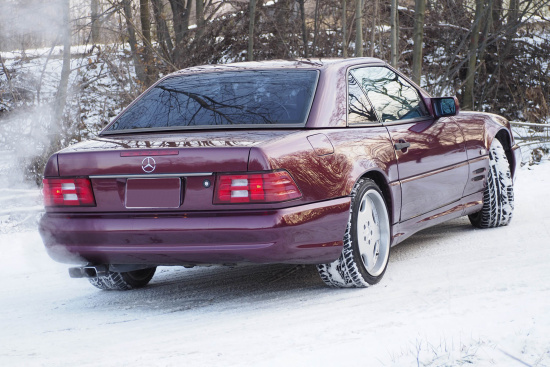
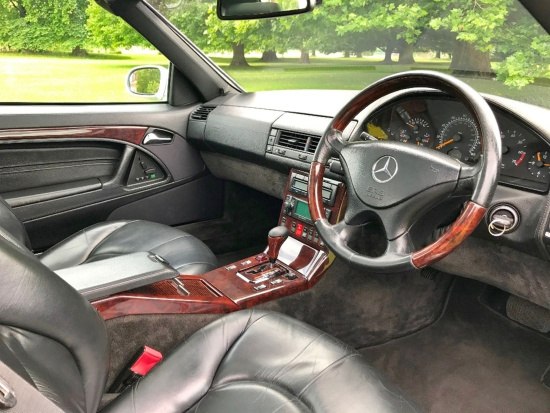
Also the steering wheel (here in a UK SL600) saw revisions
The R 129 was the first Mercedes to feature several new technologies. An important SL safety feature was the automatically folding roll bar, which in the event of a rollover stretched over the passenger compartment in just 0.3 seconds. The reinforced A-pillars are also extremely buckling-resistant. Also new in a Mercedes was the optional Adaptive Damper System (ADS). This technology enables permanent automatic level control on all wheels. From 120 km/h, the system lowers the SL by 20 millimeters. Below 40 km/h, the electronically controlled hydraulic wheel suspension provides 40 mm more ground clearance.
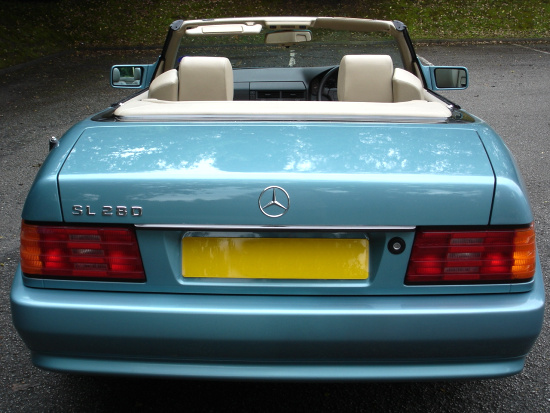
Over the twelve years of production, Mercedes R129 customers had a choice of 13 different engines. The most popular in Europe was the SL320, which produced 231 hp with the M104 in-line six-cylinder engine. Mercedes installed other in-line six-cylinder engines in the SL280 (M104, 193 hp), the 300SL (M103, 190 hp) and the 300 SL-24 (M104, 231 hp). Starting in 1998, 90-degree V6 engines with three-valve technology replaced the inline six engines, which were inferior to their predecessors in terms of power and smoothness, but were still powerful and economical. The main reasons for the switch to light alloy three-valve V6s were lower production costs compared to inline engines due to the simpler engineering design, and increased safety in the event of a front-end collision.
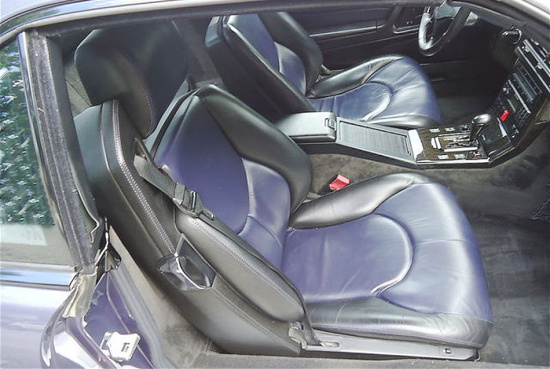
For the first time various designo color options became available
The five-liter V8 M119 engines in the 500SL produced 326 hp and were in great demand, especially in the USA. The maximum torque of 450 Nm at the crankshaft gave the roadster an impressive sovereignty. In 1998, the DOHC V8s were replaced by simpler three-valve OHC M113 engines. This reduced the maximum power by 20 hp to 306 hp. The twelve-cylinder M120 engine in the 600SL is particularly impressive at 394 hp. However, the massive aluminum engine block in the rather heavy car puts a strain on the front axle and makes it appear slightly top-heavy. It is also notable for its high fuel consumption.
The SL was offered as a Special Edition
Special Editions had never been offered for the SL, but after starting with a Mille Miglia Edition in 1995, Mercedes seemed to have taken a liking to the idea and offered over the years several other editions:
- 40th Anniversary Roadster Edition (1997)
- Special Edition (1998)
- Final Edition (2000)
- SL Edition (2000)
- F1 Edition (2001)
- Silver Arrow Edition (2002)
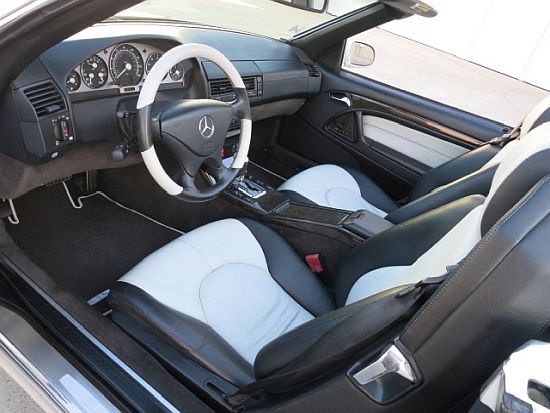
A Silver Arrow Edition SL500 interior from 2002
Also various country-specific editions for the UK or the US for example were made available throughout the years.
For the first time, AMG played a larger role with its own SL offers
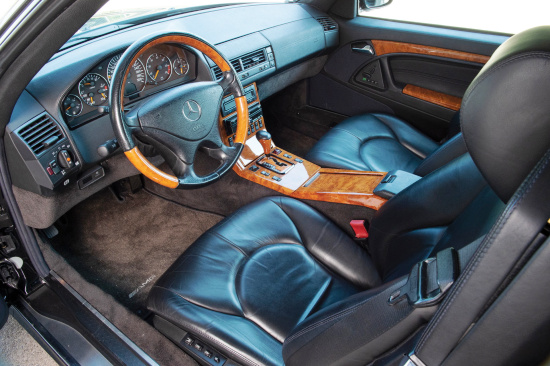
The SL73 AMG was the most powerful R129 version
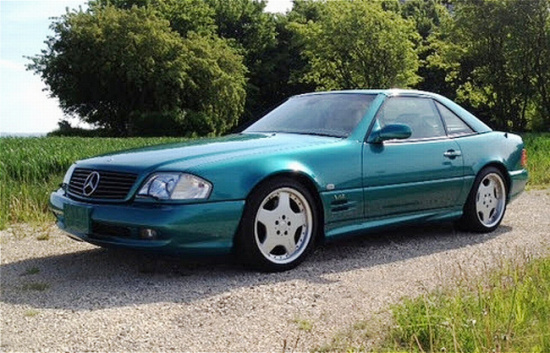
Those for whom the power of the standard engines was not enough could opt for the AMG models. Both V8 engines were available as SL60 AMG or SL55 AMG with 381 or 354 horsepower. AMG increased the displacement of the twelve-cylinder M120 from six to seven and finally to 7.3 liters. These true monsters in the SL70 AMG and SL73 AMG delivered 496 and 525 hp and an impressive 720 and 750 Nm respectively. Only 192 of these two versions were built.
In 2001 the R129 was replaced by the R230.
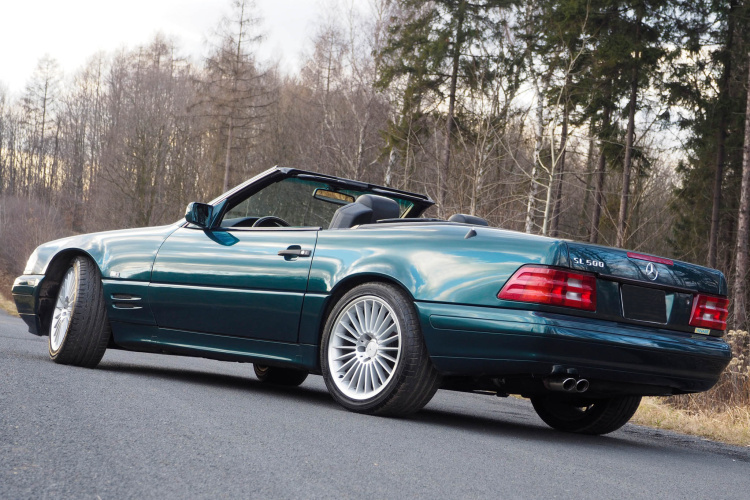
If you want to know more about the Mercedes R129 SL and its development and history, you can read it in my book and e-book. It comes with a comprehensive buyer’s guide and explains VIN/FIN and data card in detail. Next to the SL it also covers the special editions and some of the tuners. This link leads you to the US Amazon site, but the title is the same on Amazon sites in other countries. I am sure, you will enjoy the reading.
